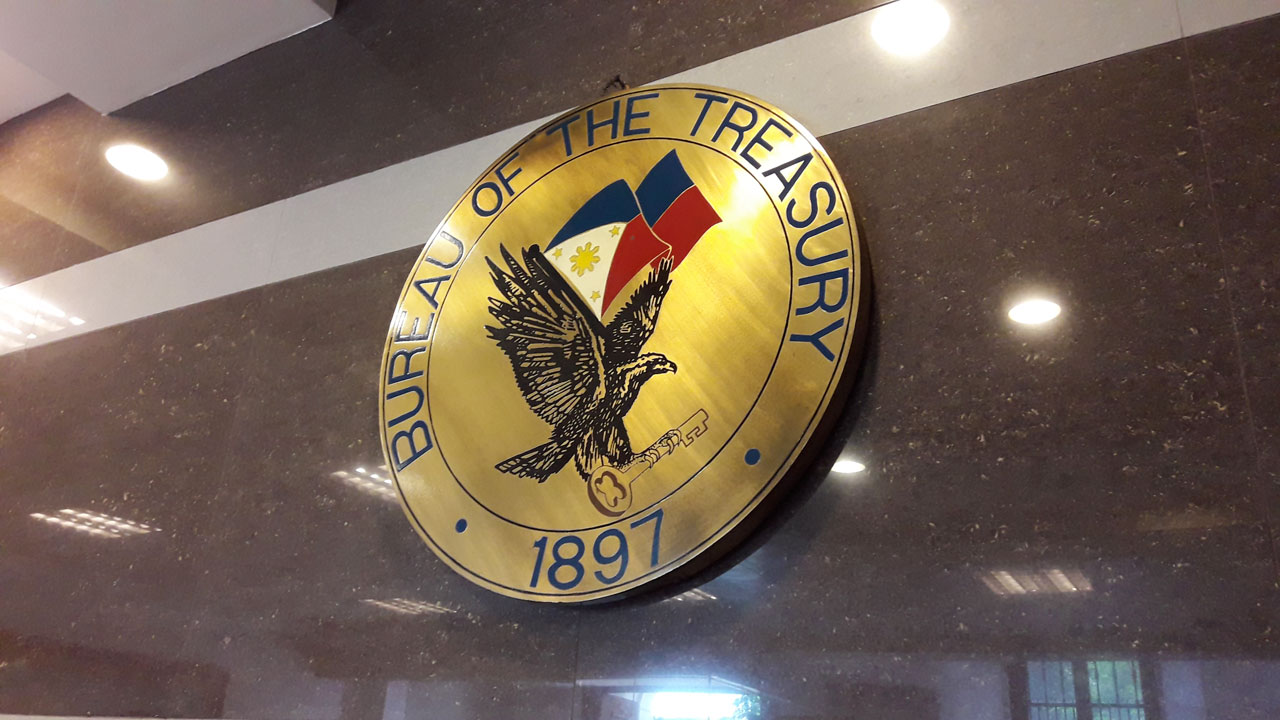Gov’t partially awards T-bonds

THE GOVERNMENT made a partial award of the new Treasury bonds (T-bonds) it offered on Tuesday with a coupon rate above secondary market levels amid hawkish signals from the US Federal Reserve and as the peso touched the P58-per-dollar level, renewing inflation concerns.
The Bureau of the Treasury (BTr) raised just P22.717 billion via the fresh 20-year bonds it auctioned off on Tuesday, lower than the P30-billion program, despite total bids reaching P37.919 billion.
The bonds were awarded at a coupon rate of 6.875%. Accepted yields ranged from 6.6% to 6.95% for an average rate of 6.797%.
The coupon fetched for the tenor was 20.3 basis points (bps) higher than the 6.672% quoted for the 20-year bond at the secondary market prior to the auction, based on PHP Bloomberg Valuation Service Reference Rates data provided by the Treasury.
“The higher T-bond rate awarded today was primarily driven by hawkish policy guidance from various US Federal Reserve officials and the anticipated impact of the weaker peso on local inflation and interest rates,” a trader said in an e-mail on Tuesday.
The government partially awarded its T-bond offer amid higher bid yields, Rizal Commercial Banking Corp. Chief Economist Michael L. Ricafort likewise said in a Viber message.
Investors asked for higher rates amid the peso’s weakness as this could lead to increased import prices that could stoke inflation anew, Mr. Ricafort said.
“Most Fed officials also signaled a cautious stance recently.”
The peso on Tuesday closed at a near 19-month low of P58.27 against the dollar, slumping by 37 centavos from the previous day.
This was the local unit’s weakest close since it ended at P58.275 on Nov. 8, 2022 and was the first time it closed at the P58-per-dollar level since Nov. 10, 2022’s P58.19.
Year to date, the peso has lost P2.90 from its end-2023 close of P55.37. The peso’s record low is at P59 per dollar, which it last hit on Oct. 17, 2022.
Bangko Sentral ng Pilipinas (BSP) Governor Eli M. Remolona, Jr. on Tuesday said the peso’s weakening was mostly driven by a strong dollar after Fed officials signaled that they could delay cutting interest rates.
Mr. Remolona said they continue to monitor the foreign exchange market and will intervene if necessary to “smoothen excessive volatility and restore order during periods of stress.”
Federal Reserve officials are not ready to say inflation is heading to the central bank’s 2% target after data last week showed a welcome easing in consumer price pressures in April, with several on Monday calling for continued policy caution, Reuters reported.
Consumer prices cooled in April, and retail spending did not increase at all, two welcome signs that the economy may be losing some steam in the face of a policy rate that the Fed has held in the 5.25%-5.5% range since last July.
But Fed policy makers, stung by a string of higher-than-expected inflation readings for the three months prior, remain cautious and want to make sure pricing pressures are fully on track back to the Fed’s 2% target rate before starting to cut its benchmark interest rate.
The Fed’s next policy meeting is June 11-12. Traders in contracts tied to the central bank’s policy rate currently do not expect an interest rate cut until September.
Meanwhile, Philippine headline inflation quickened to 3.8% year on year in April from 3.7% in March. Still, this was slower than the 6.6% print in the same month a year ago.
For the first four months, the consumer price index averaged 3.4%, below the BSP’s 3.5% baseline forecast and within its 2-4% target for the year.
The BSP last week kept its policy rate unchanged at a 17-year high of 6.5% for a fifth straight meeting but signaled that it could cut borrowing costs as early as August or before the Fed following slower-than-expected April inflation.
The government wants to raise P210 billion from the domestic market this month, or P60 billion from Treasury bills and P150 billion via T-bonds. It borrows from local and foreign sources to help fund its budget deficit, which is capped at P1.48 trillion or 5.6% of gross domestic product for this year. — A.M.C. Sy with Reuters



